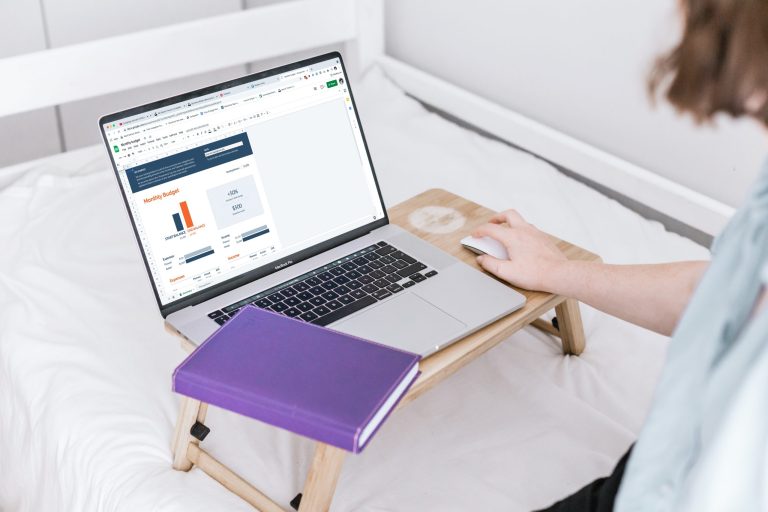- Savings
 SavingsSave regularly, from as little as £5 per month.
SavingsSave regularly, from as little as £5 per month.- Member Account
- Family Member Account
- Junior Account
- Notice Plus Account
- Reserve Account
- Festive Fund Account
- Five-Year Regular Saver Waitlist
- Fixed Term Deposit Waitlist
- Discontinued Accounts
- Loans
 LoansHelping you by offering a range of loans for a variety of purposes, direct from your payroll.
LoansHelping you by offering a range of loans for a variety of purposes, direct from your payroll.- Member Loan
- Consolidation Loan
- Commutation Loan
- Student Officer Loan
- Revolving Credit
- Green Loan
- Loyalty Loan
- 70+ Loan
- Credit Builder Loan
- Holiday Loan
- Additional Borrowing
- Discontinued Accounts
- Mortgages
 MortgagesHelping the police family to get on and remain on the property ladder.
MortgagesHelping the police family to get on and remain on the property ladder.- Speak to a Mortgage Adviser
- Mortgage Calculator
- How to apply
- Agreement in Principle
- First Time Buyer
- Fixed Rate Mortgages
- Family Assist Mortgage
- Standard Variable Rate Mortgage
- Budget Planner
- Useful Contacts
- Financial Wellbeing
 Financial WellbeingSome of our top tips to help you manage your money even better.
Financial WellbeingSome of our top tips to help you manage your money even better.- Managing Debt
- Representative APR
- Credit Score
- Gambling awareness
- Stop Loan Sharks
- Jargon Buster
- Fraud Awareness
- Family Financing
- Support for your wellbeing
- Let’s Talk About Money newsletter
- Services and Support
 Services and SupportFind more information on the additional services or support we offer.
Services and SupportFind more information on the additional services or support we offer.- Interest and dividend rates
- Prize Draw
- Life Protection
- Notify us of your retirement
- FAQs
- Annual General Meeting
- About Us
 About UsFind out more about the biggest police credit union in the UK.
About UsFind out more about the biggest police credit union in the UK.- About Us
- Board of Directors
- Mission Statement
- News
- Contact Us
Written by: Ben Kirkman
Category: Let's talk about money
Read Time: 5 minutes
You’re a first-time buyer ready to start the process of purchasing your first property, congratulations! Now, the real question you might be asking yourself is, ‘what happens next?’.
This guide covers everything from securing your Agreement in Principle to collecting your keys. We’ll also explain the costs, types of surveys, and the roles key individuals play throughout the process.
Step 1: Consider whether you want to use a mortgage broker
If you need a mortgage, you can research deals and apply directly with a lender yourself or use a mortgage broker. Using a mortgage broker isn’t essential and can sometimes involve fees, which is why some people prefer to go directly to lenders especially if they already have a clear idea of what they’re looking for. If you do not plan to use a mortgage broker, please skip to step 2.
Mortgage brokers can help by:
- Comparing a range of mortgage deals (some may have access to deals not available directly)
- Assisting with paperwork and communicating with lenders
- Offering advice tailored to your circumstances
Important note: Some brokers are paid by lenders and don’t charge you a fee, while others do. It’s always best to check fees before agreeing to proceed. Keep in mind that brokers don’t always have access to every deal on the market as some lenders offer exclusive deals directly to customers and don’t work with brokers.
Step 2: Get an Agreement in Principle (AIP)
An Agreement in Principle (also known as a Decision in Principle or Mortgage Promise) is a document from a lender showing how much they might be willing to lend you based on basic checks. Getting an AIP usually involves a soft credit check meaning this won’t affect your credit score. You can obtain an AIP from many financial providers, including ourselves.
It’s not a guarantee of how much you can borrow, but:
- It’ll help you understand how much a financial institution might be willing to lend subject to application, giving you a clearer idea of your price range
- It shows estate agents and sellers you’re a serious buyer
You’ll usually need:
- Proof of income
- Personal information, such as number of dependants
- Details of debts/credit commitments
- Basic ID
Step 3: Start house hunting
The time has come for you to start searching for the property you want to make your home! With your AIP and budget in hand you can start viewing properties.
Try to look beyond the surface of a property and consider things like:
- What local transport links and schools are close by?
- Is the property leasehold or freehold? If leasehold, there may be ground rent charges to budget for
- Do you need to do extensive renovations?
- Check the energy rating (EPC)
- What’s the council tax band?
- What’s the statistics on the area?
And so on…
Top tip: Take notes and photos during viewings as details will start to blur after you’ve viewed a range of properties.
Step 4: Making a formal offer
So, you’ve found the house you’d like to call home! It’s now time to make an offer through the estate agent acting on behalf of the seller.
How much should you offer?
You can make an offer below, at, or above the asking price. In cases where there’s high demand and multiple offers on a property, the seller and estate agent may choose to move to a ‘best and final offer’ process. This means each interested buyer is invited to submit the maximum amount they’re willing to pay by a set deadline, allowing the seller to consider all offers at the same time. If this happens, the estate agent will inform you.
Step 5: Offer accepted
Once your offer has been accepted the property is typically marked as ‘sold subject to contract’ and taken off the market. However, it’s important to understand that nothing is legally binding at this stage. Both you and the seller can still withdraw from the sale if you choose to.
At this point you’ll need to provide additional documents to the estate agent, formally apply for your mortgage, appoint a solicitor or conveyancer, and decide whether you want to arrange any private surveys or searches on the property.
Estate agents may be keen to move things along quickly. But it’s important to take your time and ensure everything is done correctly. Submitting accurate information and fully understanding the process is far better than rushing and making costly mistakes.
Step 6: Apply for your mortgage (formally)
Now that your offer has been accepted, it’s time to formally apply for your mortgage. If you’re working with a mortgage broker, you’ll coordinate with them to proceed.
If you’re applying yourself, you don’t have to start your search from scratch as you can continue with the provider that gave you your AIP. That said, you’re still more than welcome to explore other options across the market to find a mortgage product that best suits your needs.
It’s important to remember that the cheapest rate isn’t always the right product for you. Factors such as product fees, flexibility around overpayments or early repayments, and how well the terms fit your long-term financial plans should also be carefully considered.
As you move forward, it’s important to carefully review the terms and conditions of your chosen mortgage, including any restrictions such as early repayment charges or limits on switching lenders in the future.
When you’re ready to apply, you’ll usually need to provide:
- Proof of income (payslips, P60, tax returns and audited business accounts if self-employed)
- Bank statements/open banking
- Evidence of funds for deposit and other associated costs of purchasing the property.
- Details of the property
- ID documents
The lender will then:
- Do a hard credit check which will impact your credit score. It’s important to not apply with providers on multiple occasions at this stage
- Complete an affordability assessment
- Complete a fact find to understand your existing and future needs and circumstances, so they can recommend you a suitable mortgage product
- Determine if you are approved to borrow the funds for the mortgage
- Carry out a valuation or survey on the property (see step 7)
- Review and verify your documents
Step 7: Understand the Types of Property Surveys
Your mortgage lender will carry out a basic valuation to assess whether the property is worth the amount you wish to borrow. This valuation is primarily for the lender’s benefit and may not be shared with you.
We recommend you also consider a private survey:
- Home Survey Level 1. The most basic survey that’s not as detailed as a Level 2 or 3. Suitable for a conventional house, flat or bungalow that, are built from common building materials, are in reasonable condition.
- Home Survey Level 2 (also called a Homebuyers Report). A more detailed survey than the Home Survey Level 1. Suitable for a conventional house, flat or bungalow that are built from common building materials, are in a reasonable condition.
- Home Survey Level 3. The most detailed report. Suitable for properties that are, large, older or run down, unusual construction, structurally altered, planning major building works.
Tip: It might be worthwhile to go for Level 2 or 3 if the home is older or needs work. Visit https://www.ricsfirms.com/ to find surveyors.
Step 8: Appoint a Solicitor/ Conveyancer
A solicitor (or licensed conveyancer) handles the legal process of buying your home. You’ll need one as soon as your offer is accepted.
They’ll:
- Run property searches (see below)
- Liaise with the seller’s solicitor
- Liaise with your mortgage lender
- Investigate any issues relating to the property or tax implications
- Review and explain contracts
- Handle your deposit and final funds
- Register you as the new owner with the Land Registry
…and more.
What are property searches?
Searches help you find any hidden legal or environmental issues.
The main ones include:
- Local authority search. Checks planning issues, roadworks, restrictions
- Drainage and water search. Ensures the property is connected to sewers and mains
- Environmental search. Checks flood risk, subsidence, contamination
Step 8: Exchange contracts
Once:
- Your mortgage is approved, and the formal offer is signed,
- The survey, valuation and searches are complete, and
- You’re happy with the legal side…
You’ll exchange contracts with the seller.
At this point:
- You pay your deposit (usually a minimum of 5%) to your solicitor
- The sale becomes legally binding and if you withdraw from the purchase at this stage, you will lose your deposit funds
- You agree a completion date (when you’ll get your keys)
You must now have buildings insurance in place, and most lenders require this from exchange.
Step 9: Completion day (Move in day!)
On the agreed date:
- Your lender transfers your mortgage funds to your solicitor
- Your solicitor then transfers your deposit and mortgage funds to the seller’s solicitor
- The seller’s solicitor confirms receipt
- You get the keys
You’re now officially a homeowner, congratulations!
Subscribe to our monthly “Let’s talk about money” newsletters here! |





